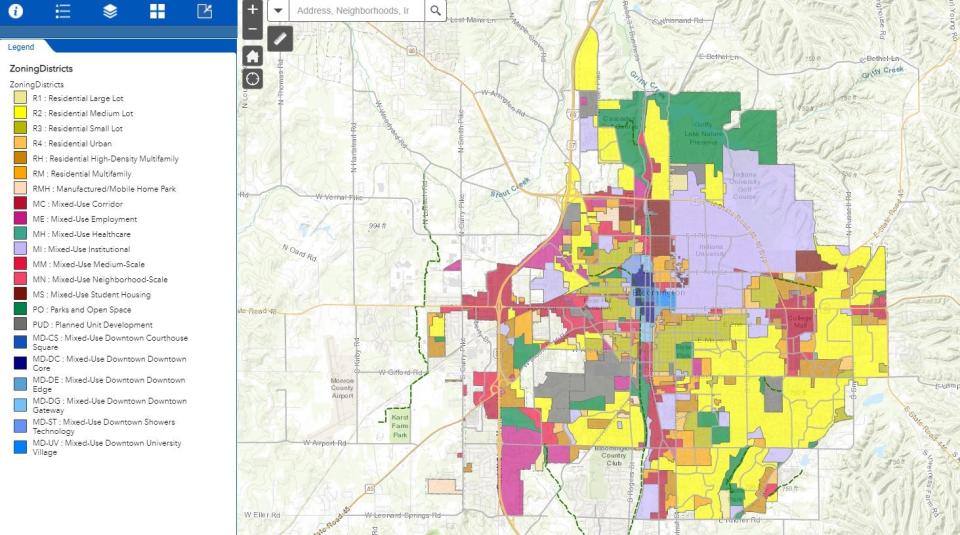Bloomington's controversial upzoning law has had no effect — at least so far
A controversial new Bloomington law that allows 15 single-family homes per year to be turned into duplexes has had no effect — at least so far.
While city planners have had discussions with nine property owners since Mayor John Hamilton signed the law in July, they have had no official requests from anyone who plans to turn a single-family home into a duplex, said Jackie Scanlan, development services manager for the Bloomington Planning and Transportation Department.
“We have had no filings thus far,” she told the Bloomington City Council Wednesday evening.
Impact of 2021 city council meetings
After a series of long and occasionally heated meetings last year, the city council in May allowed for the creation of up to 15 duplexes per year in its R1, R2 and R3 zoning areas, which cover areas dominated by single-family homes.
Hamilton pushed for the changes to increase the availability of housing and to allow more people to live in the city’s core. Opponents of the plan said they believe greater density should be carefully planned and confined to the edges of core neighborhoods.
Previous story on zoning: City council gives final OK to zoning changes, more duplexes
Most people who spoke during the council meetings last year opposed allowing the creation of more duplexes, especially in the city’s core neighborhoods. Opponents said they feared the legislation would provide investors, primarily from out-of-town, essentially unfettered access to Bloomington’s single-family housing stock and would forever change the neighborhoods’ character.

“We just aren’t seeing an onslaught of requests … that some people were kind of worried about,” Scanlan said Wednesday.
During the debate, proponents of the legislation argued given the city's high housing prices, allowing for more duplexes would allow more people to purchase homes, as families could live on one side of the duplex and pay part of the mortgage with rental income from the other half.
The median price for a home in Monroe County in December was $275,000, up 16% from a year earlier. Monroe County’s market was the seventh-most expensive in the state that month, according to the Indiana Association of Realtors. Neighboring Brown County, with a median sales price of $283,500, ranked sixth.
A duplex conversion in Bloomington requires a neighborhood meeting and a hearing before the board of zoning appeals. Any conversion that is granted prohibits any additional conversion within 150 feet.
Council member Kate Rosenbarger, who supported the creation of more duplexes, said given the complicated process, she was not surprised by the lack of interest.
Scanlan acknowledged more regulations act as a deterrent to development, though she also said people may not have become familiar with the process yet as the law was approved just last year.
Council member Dave Rollo, who opposed allowing more duplexes in core neighborhoods, said it would be premature to draw any conclusions about the law’s impact.
However, council member Stephen Volan, who supported the creation of more duplexes, said data indicate that fears of rapacious investors swooping into Bloomington to flip single-family homes into duplexes have not materialized.
Researchers: Housing supply should lower prices — but dangers lurk
“The argument last year was this paranoid expectation that whole blocks would be dismantled by bulldozers,” he said. “I don’t see anything even remotely close to that.”
Scanlan said data the department will present in July likely will provide a better basis for understanding the law’s impact as the next reporting period will include the spring construction season.
Boris Ladwig is the city government reporter for The Herald-Times. Contact him at bladwig@heraldt.com.
This article originally appeared on The Herald-Times: Homes: Will Bloomington zoning law add more affordable housing?

